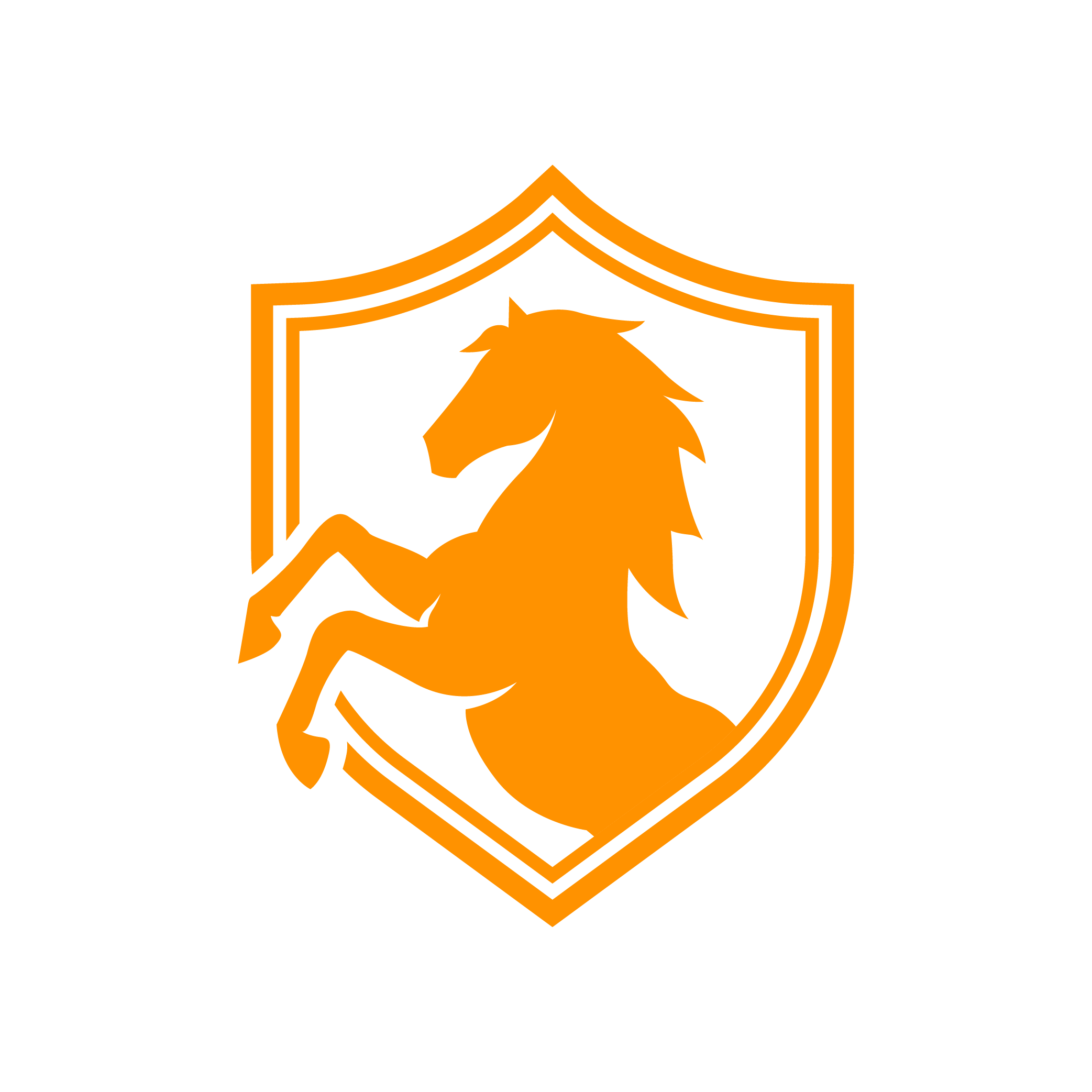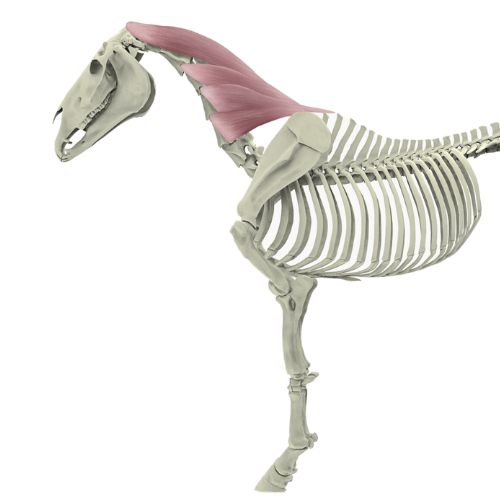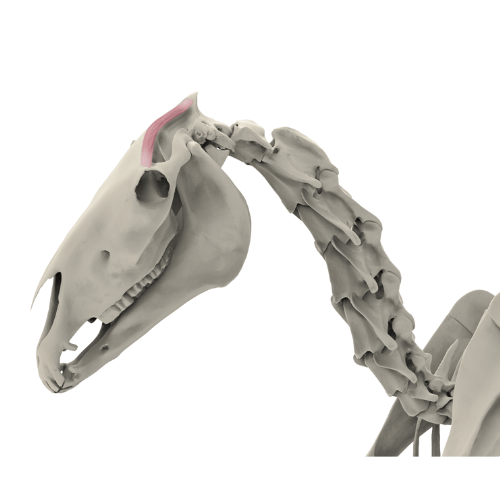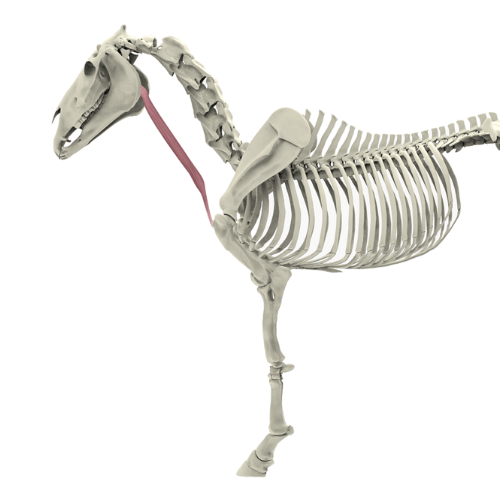The splenius capitis muscle, often simply referred to as the splenius muscle, is an important muscle in the horse's neck and head region. It extends from the withers through the cervical spine to the occiput and plays a central role in head posture and neck mobility. This muscle is responsible not only for raising and extending the head, but also for lateral flexion, which is essential for the horse's balance and coordination.
/wp:paragraphwp:heading
Anatomy and function of the strap muscle
/wp:headingwp:paragraph
The striated muscle originates from the spinous processes of the 3rd to 5th thoracic vertebrae (Th3 to Th5). From there, it extends via the transverse processes of the 3rd to 5th cervical vertebrae (C3 to C5) to the nuchal crest and the mastoid process of the temporal bone at the back of the head. This arrangement gives it the leverage needed to extend, lift, and move the neck and head laterally.
/wp:paragraphwp:heading
The main functions of the splenius capitis muscle include:
/wp:headingwp:list
- wp:list-item
- Raising the head and thus the direction the horse is looking. /wp:list-item
- Stretching the neck, especially during elevated movements such as the gallop. /wp:list-item
- Lateral flexion of the neck, which allows the horse to turn its head and maintain balance. /wp:list-item
wp:list-item
wp:list-item
wp:heading
Causes and signs of tension in the strap muscle
/wp:headingwp:paragraph
Various factors can lead to problems and tension in the neck muscle. A bridle that's too tight or a tie-down that's too tight restricts the natural freedom of movement of the head and can lead to pain and muscle tension. Harsh riders' hands and unsuitable equipment can also strain the neck muscles and lead to overuse of the neck muscle. Even everyday situations like tying up can cause damage due to pressure in the poll region, especially if the horse is startled and pulls backward.
/wp:paragraphwp:heading
Common signs of problems in the strap muscle area are:
/wp:headingwp:list
- wp:list-item
- The horse has problems moving its head sideways or bending correctly. /wp:list-item
- The muscle does not work freely, which results in a stiff or inelastic posture. /wp:list-item
- Affected horses often show discomfort, especially when moving sideways or galloping, where the muscle is heavily stressed. /wp:list-item
wp:list-item
wp:list-item
wp:heading
How to relieve tension and fascial adhesions in your horse's strap muscle
/wp:headingwp:paragraph
With the NeedleyRoll fascia and massage roller for horses, the entire splenius capitis muscle can be worked evenly on both sides. Start with little to no pressure and work your way up gently. Pay close attention to your horse's reactions to find out what works for him. Stay mindful and try different pressure levels and movements to gently release tension and adhesions and relax the muscle.
/wp:paragraphwp:heading
The importance of the strap muscle for balance and mobility
/wp:headingwp:paragraph
The halter muscle plays a key role in the horse's balance, especially in the canter, when the neck is used for balance and forward and upward momentum. A free and relaxed halter muscle allows the horse to move smoothly while maintaining correct head carriage.
/wp:paragraphwp:heading
Conclusion: The ligament muscle – an essential support for the head and neck
/wp:headingwp:paragraph
A healthy, relaxed ligament muscle is essential for a horse's mobility, balance, and performance. By ensuring proper equipment, gentle rein work, and regular relaxation, we promote the horse's well-being and enable it to move freely and harmoniously.
/wp:paragraphwp:buttons
/wp:buttons
wp:woocommerce/all-products {"columns":3,"rows":3,"alignButtons":false,"contentVisibility":{"orderBy":true},"orderby":"date","layoutConfig":[["woocommerce/product-image",{"ima geSizing":"thumbnail"}],["woocommerce/product-title"],["woocommerce/product-price"],["woocommerce/product-rating"],["woocommerce/product-button"]]}
/wp:woocommerce/all-products




Leave a comment
This site is protected by hCaptcha and the hCaptcha Privacy Policy and Terms of Service apply.